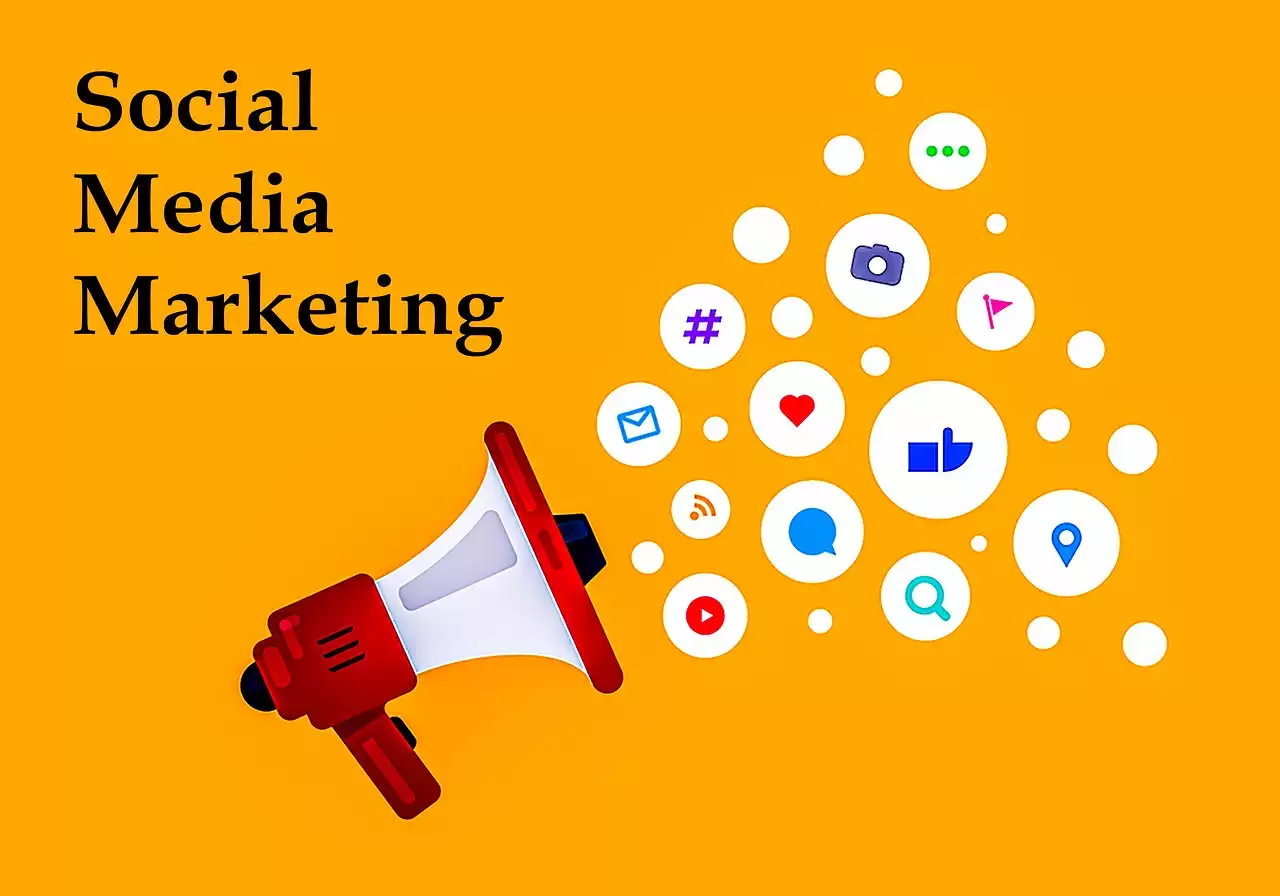Why social media is important for your e-commerce business?
Social media is a powerful tool that can help you reach new customers and increase your brand's visibility. According to a survey conducted by Statista, there are over 3.6 billion social media users worldwide, and this number is expected to grow to 4.41 billion by 2025. With so many people using social media, it's no wonder that businesses are using it to promote their products and services.
One of the main reasons why social media is important for e-commerce businesses is that it allows you to engage with your customers on a more personal level. Social media platforms like Facebook, Twitter, and Instagram provide a space for you to interact with your customers, answer their questions, and address their concerns. By doing so, you can build trust with your customers and establish a loyal following.
Another reason why social media is important for e-commerce businesses is that it can help you increase your website traffic. By sharing links to your website on social media, you can drive more traffic to your site and increase your chances of making a sale. Additionally, social media can help you improve your search engine rankings. When you share content on social media, it can get shared by others, which can lead to more backlinks to your site. This, in turn, can improve your search engine rankings and make it easier for people to find your website.
Overall, social media is an essential tool for e-commerce businesses. By using social media, you can reach new customers, engage with your existing customers, and increase your website traffic.
The benefits of using social media for e-commerce
There are many benefits to using social media for e-commerce businesses. Here are some of the top benefits:
- Increased brand awareness: Social media can help you increase your brand's visibility and reach a wider audience. By sharing content on social media, you can get your brand in front of people who may not have heard of it before.
- Improved customer engagement: Social media provides a space for you to engage with your customers and build relationships with them. By responding to their comments and messages, you can show your customers that you care about their needs and concerns.
- Increased website traffic: By sharing links to your website on social media, you can drive more traffic to your site and increase your chances of making a sale.
- Improved search engine rankings: Social media can help you improve your search engine rankings by generating more backlinks to your site. When people share your content on social media, it can lead to more backlinks, which can improve your search engine rankings.
- Cost-effective marketing: Social media is a cost-effective way to market your products and services. Unlike traditional advertising, you don't need a large budget to get started with social media marketing.
Overall, social media can help e-commerce businesses increase their brand awareness, engage with their customers, drive more website traffic, improve their search engine rankings, and market their products and services in a cost-effective way.
Choosing the right social media platform for your e-commerce business
When it comes to social media marketing, it's important to choose the right platform for your business. Not all social media platforms are created equal, and each platform has its own strengths and weaknesses. Here's a rundown of some of the top social media platforms for e-commerce businesses:
- Facebook: With over 2.8 billion monthly active users, Facebook is the largest social media platform in the world. It's a great platform for e-commerce businesses that want to reach a wide audience and engage with their customers on a more personal level.
- Instagram: Instagram is a visual platform that's perfect for e-commerce businesses that want to showcase their products. With over 1 billion monthly active users, Instagram is a great platform for businesses that want to reach a younger audience.
- Twitter: Twitter is a fast-paced platform that's perfect for e-commerce businesses that want to share news and updates about their products. With over 330 million monthly active users, Twitter is a great platform for businesses that want to engage with their customers in real-time.
- Pinterest: Pinterest is a visual platform that's perfect for e-commerce businesses that sell products that are visually appealing. With over 478 million monthly active users, Pinterest is a great platform for businesses that want to reach a predominantly female audience.
When choosing a social media platform for your e-commerce business, it's important to consider your target audience and the type of products you sell. By choosing the right platform, you can maximize your reach and engage with your customers in a meaningful way.
Setting up your social media profiles for e-commerce
Once you've chosen the right social media platform for your e-commerce business, it's time to set up your profiles. Here are some tips for setting up your social media profiles for e-commerce:
- Use high-quality images: Your social media profiles should feature high-quality images that showcase your products. Make sure your images are clear and professional-looking.
- Optimize your bio: Your social media bio should be optimized for e-commerce. Make sure to include information about your products and a link to your website.
- Use relevant hashtags: Hashtags can help you reach a wider audience on social media. Make sure to use relevant hashtags in your posts to increase your visibility.
- Post regularly: To keep your audience engaged, you should post regularly on social media. Make sure to post a mix of promotional and non-promotional content.
- Respond to comments and messages: Social media provides a space for you to engage with your customers. Make sure to respond to comments and messages in a timely manner to build trust with your customers.
By setting up your social media profiles for e-commerce, you can create a professional-looking presence on social media that showcases your products and engages with your customers.
Creating a social media content plan for your e-commerce business
To succeed on social media, you need to have a content plan in place. A social media content plan outlines the types of content you'll post on social media, when you'll post them, and who your target audience is. Here are some tips for creating a social media content plan for your e-commerce business:
- Define your target audience: Before you start creating content, you need to define your target audience. Who are you trying to reach with your social media content? What are their interests and pain points?
- Choose the right content formats: Social media supports a variety of content formats, including text, images, videos, and live streams. Choose the right content formats for your audience and your products.
- Create a content calendar: A content calendar is a schedule of the content you'll post on social media. It should include the type of content, the date and time it will be posted, and any relevant hashtags.
- Mix promotional and non-promotional content: To keep your audience engaged, you should mix promotional and non-promotional content. This can include product promotions, behind-the-scenes content, and user-generated content.
- Monitor your analytics: To measure the success of your social media content, you need to monitor your analytics. This can include metrics like engagement rate, reach, and website traffic.
By creating a social media content plan for your e-commerce business, you can ensure that your content is optimized for your audience and your products.
How to optimize your social media content for e-commerce
To get the most out of your social media efforts, you need to optimize your content for e-commerce. Here are some tips for optimizing your social media content:
- Use high-quality images and videos: Your social media content should feature high-quality images and videos that showcase your products. Make sure your images and videos are clear and professional-looking.
- Include a call-to-action: To encourage your audience to take action, you should include a call-to-action in your social media posts. This can be as simple as asking your audience to visit your website or make a purchase.
- Use social proof: Social proof is a powerful tool that can help you build trust with your audience. This can include customer reviews, testimonials, and user-generated content.
- Optimize your product descriptions: When sharing products on social media, make sure to optimize your product descriptions for e-commerce. This can include including product details, pricing information, and a clear call-to-action.
- Use social media advertising: Social media advertising can help you reach a wider audience and drive more sales. Platforms like Facebook and Instagram offer a variety of advertising options for e-commerce businesses.
By optimizing your social media content for e-commerce, you can maximize your reach and increase your chances of making a sale.
Social media advertising for e-commerce
Social media advertising can be a powerful tool for e-commerce businesses. Here are some tips for using social media advertising to grow your e-commerce business:
- Define your target audience: Before you start advertising on social media, you need to define your target audience. Who are you trying to reach with your ads? What are their interests and pain points?
- Choose the right ad formats: Social media platforms offer a variety of ad formats, including image ads, video ads, and carousel ads. Choose the right ad format for your audience and your products.
- Use retargeting: Retargeting is a powerful tool that can help you reach people who have already shown an interest in your products. By retargeting people who have visited your website or engaged with your social media content, you can increase your chances of making a sale.
- Monitor your metrics: To measure the success of your social media advertising, you need to monitor your metrics. This can include metrics like click-through rate, conversion rate, and cost per click.
By using social media advertising, you can reach a wider audience and increase your chances of making a sale.









